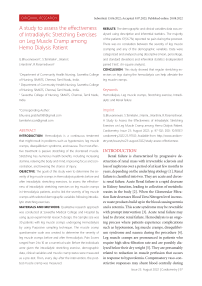A study to assess the effectiveness of intradialytic stretching exercises on leg muscle cramp among hemo dialysis
Автор: Bhuvaneswari P.G., Tamilselvi S., Harini J., Harshini J., Parameshwari R.
Журнал: Cardiometry @cardiometry
Рубрика: Original research
Статья в выпуске: 23, 2022 года.
Бесплатный доступ
INTRODUCTION: Hemodialysis is a continuous treatment that might result in problems such as hypotension, leg muscle cramps, disequilibrium syndrome, and nausea. The most effective treatment is passive stretching of the shortened muscle. Stretching has numerous health benefits, including increasing stamina, relaxing the body and mind, improving focus and concentration, and lowering the chance of injury. OBJECTIVE: The goals of this study were to determine the severity of leg muscle cramps in Hemodialysis patients before and after intradialytic stretching exercises, to assess the effectiveness of intradialytic stretching exercises on leg muscle cramps in Hemodialysis patients, and to link the severity of leg muscle cramps with selected demographic variables following intradialytic stretching exercises. MATERIALS AND METHODS: Qualitative research approach was conducted at Saveetha Medical College and Hospital by using quasi experimental research design, the Sample size was 30 patients with leg muscle cramps undergoing Hemodialysis by using Purposive sampling technique. The muscle cramp questionnaire scale was created to determine the severity of leg muscle cramps before and after Hemodialysis. Pain Scores ranged from 0 to 10 on a numerical scale. Before the individuals were given the intradialytic stretching exercise, demographic data, clinical variables and muscle cramp status were measured as a pre-test. Then, every day after the intervention, the posttest muscle cramp was measured. RESULTS: The demographic and clinical variables data was analysed using descriptive and inferential statistics. The majority of the patients 17(56.7%) reported no pain during the post-test. There was no correlation between the severity of leg muscle cramping and any of the demographic variables. Data were categorized and analysed using descriptive (mean, percentage, and standard deviation) and inferential statistics (independent paired t test’, chi-square analysis). CONCLUSION: This study showed that regular stretching exercises on legs during the hemodialysis can help alleviate the leg muscle cramps.
Hemodialysis, leg muscle cramps, stretching exercise, intradialytic and renal failure
Короткий адрес: https://sciup.org/148326575
IDR: 148326575 | DOI: 10.18137/cardiometry.2022.23.97102
Текст научной статьи A study to assess the effectiveness of intradialytic stretching exercises on leg muscle cramp among hemo dialysis
INTRODUCTION : Hemodialysis is a continuous treatment that might result in problems such as hypotension, leg muscle cramps, disequilibrium syndrome, and nausea. The most effective treatment is passive stretching of the shortened muscle. Stretching has numerous health benefits, including increasing stamina, relaxing the body and mind, improving focus and concentration, and lowering the chance of injury.
OBJECTIVE : The goals of this study were to determine the severity of leg muscle cramps in Hemodialysis patients before and after intradialytic stretching exercises, to assess the effectiveness of intradialytic stretching exercises on leg muscle cramps in Hemodialysis patients, and to link the severity of leg muscle cramps with selected demographic variables following intradialytic stretching exercises.
MATERIALS AND METHODS : Qualitative research approach was conducted at Saveetha Medical College and Hospital by using quasi experimental research design, the Sample size was 30 patients with leg muscle cramps undergoing Hemodialysis by using Purposive sampling technique. The muscle cramp questionnaire scale was created to determine the severity of leg muscle cramps before and after Hemodialysis. Pain Scores ranged from 0 to 10 on a numerical scale. Before the individuals were given the intradialytic stretching exercise, demographic data, clinical variables and muscle cramp status were measured as a pre-test. Then, every day after the intervention, the posttest muscle cramp was measured.
RESULTS : The demographic and clinical variables data was analysed using descriptive and inferential statistics. The majority of the patients 17(56.7%) reported no pain during the post-test. There was no correlation between the severity of leg muscle cramping and any of the demographic variables. Data were categorized and analysed using descriptive (mean, percentage, and standard deviation) and inferential statistics (independent paired t test’, chi-square analysis).
CONCLUSION : This study showed that regular stretching exercises on legs during the hemodialysis can help alleviate the leg muscle cramps.
Imprint
G.Bhuvaneswari, S.Tamilselvi, J.Harini, J.Harshini, R.Parameshwari. A Study to Assess the Effectiveness of Intradialytic Stretching Exercises on Leg Muscle Cramp among Hemo Dialysis Patient. Cardiometry; Issue 23; August 2022; p. 97-102; DOI: 10.18137/ cardiometry.2022.23.97102; Available from:
Renal failure is characterized by progressive destruction of renal mass with irreversible sclerosis and loss of nephrons over a period of at least few months to years, depending on the underlying etiology [1]. Renal failure is classified into two. They are acute and chronic renal failure. Acute Renal failure is a rapid decrease in Kidney function, leading to collection of metabolic wastes in the body [2]. When the Glomerular Filtration Rate decreases Blood Urea Nitrogen level increases waste products build up in the blood causing uremia and a zotemia. This acute syndrome may be reversible with prompt intervention [3]. Acute renal failure may lead to chronic renal failure. Hemodialysis is an ongoing process where patients experience complications such as hypotension, leg muscle cramps, disequilibrium syndrome and nausea during the procedure [4]. Leg muscle cramps are pronounced in patients who require high ultra-filtration rate and are possibly dialyzed below their dry weight [5]. They are presumably related to reduction in muscle perfusion that occurs in response to hypovolemia. Compensatory vaso-con-strictive responses may shunt blood centrally during treatment and could play a role in promoting leg muscle cramps [6].Changes in intra or the extra cellular balance of potassium and concentration of ionized calcium can disturb neuromuscular transmission and produce cramps. Peripheral vascular disease associated with increased prevalence of intradialytic cramps which confirms that processes related to the dialysis treatment are responsible for the cramps [7].
The health benefits of stretching are amazing as it can increase stamina, relax body and mind, improve focus and concentration, and reduce the risk of injury. Other benefits of stretching exercises are reduction of stress and tension, muscle pain, soreness and increase flexibility. It makes muscle tone elastic and reduces the risk of injury. Stretching exercise can lower the build- up of lactic acid in the muscles and help to eliminate tightness and chance of damage. The most used non pharmacological therapies are Stretching exercise, strengthening exercise and oil massage. Passive Stretching is effective to relieve leg muscle cramps during Hemodialysis session [8].
Stretching Exercise may be the best measure to reduce or prevent cramps. Passive stretching of the shortened muscle is the most effective treatment. Alternatively squeezing and releasing the cramped muscle may help. This mechanical kneading restores blood flow and generally helps relax the spasm and tightness [9].
MATERIALS AND METHODS
In this study qualitative research approach was conducted at Saveetha Medical College and Hospital using quasi experimental research design. The Sample of the study was chronic kidney disease patients undergoing Haemodialysis; the Sample size for this study was 30 patients with leg muscle cramps undergoing Hemodialysis by using Purposive sampling technique. The criteria for sample selection are Patients with chronic kidney disease, Patients who had leg muscle cramps during Hemodialysis, Patients who are alert and cooperative Patients undergoing Hemodialysis at Saveetha Medical College and Hospital. The Data Collection was done at Saveetha Medical College and Hospital, Than-dalam. Permission was obtained before data collection from the HOD of dialysis department. Researcher introduced to staff nurses and developed rapport with them. The Objective of the study was explained to the staff nurses and other professional to get the cooperation during the procedure. Written consent was obtained. 30 patients with leg muscle Cramps during 98 | Cardiometry | Issue 23. August 2022
Hemodialysis was selected on the basis of purposive sampling technique. Before administering the intradialytic stretching exercise to the subjects, demographic data, clinical variables, Numerical pain scale and muscle cramp status was assessed as a pre-test. Then the intradialytic stretching exercise was administered to the subjects with muscle cramp questionnaire scale from the first day. The researcher administered intradialytic stretching exercise to the subjects for 20 mints for seven consecutive days it took 2 hours per day. Then the posttest muscle cramp was assessed after intervention. The researcher given intervention for five patients per day and it took 20 minutes for each subject.
THERAPUETIC INTERVENTION
INTRADIALYTIC STRETCHING EXERCISES
-
1. ANKLE DORSIFICATION
Place the non-dominant handover the knee to stabilize the knee Place the dominant hand under the heel, with the foot against the forearm, and push the heel downward with this hand.
-
• Hold the position for 20-30seconds.
-
• Repeat the action for 3 times.
-
2. GASTROCNEMIUS-PASSIVE STRETCH
-
3. SOLEUS-PASSIVESTRETCH
-
4. HAMSTRING STRETCH
To stretch one muscle (the gastrocnemius), extend the knee with one and, place the other hand on top of the ankle, and push in the another direction.
To stretch the second muscle (the soleus), flex the knee with one hand, place the other hand under the calf, and push in the other direction.
-
• Place one hand under the knee and the hand under the heel.
-
• With the knee straight and the kneecap pointed toward the ceiling, raise the complete leg toward the ceiling.
-
• When the raised knee begins to bend slightly, the hand under your knee should be moved to the upper part of your knee.
-
5. QUADERCIPE STRETCH
-
• Flex the knee of the patient until the heel touches his back.
-
• Place the non-dominant hand over the pelvis to restrict the pelvic rotation.
-
• Hold the flexed knee on the hands and try to extend the hip as much as possible.
-
• Hold the position for 20 Seconds and allow relaxing.
-
• Repeat the procedure for 3 times
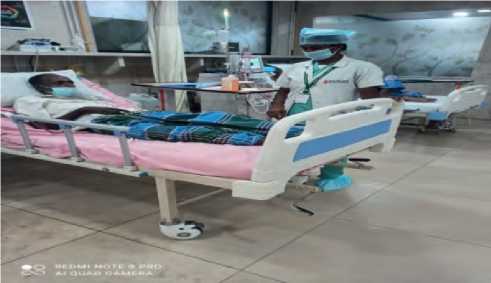
Figure 1. Collecting the demographic variables from the patient undergoing Hemodialysis
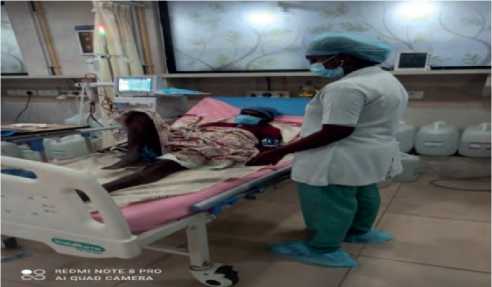
Figure 2. Collecting the clinical variables from the patient undergoing Hemodialysis
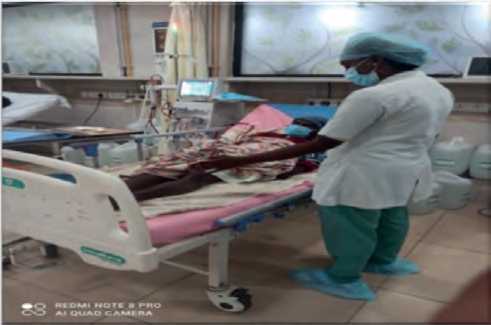
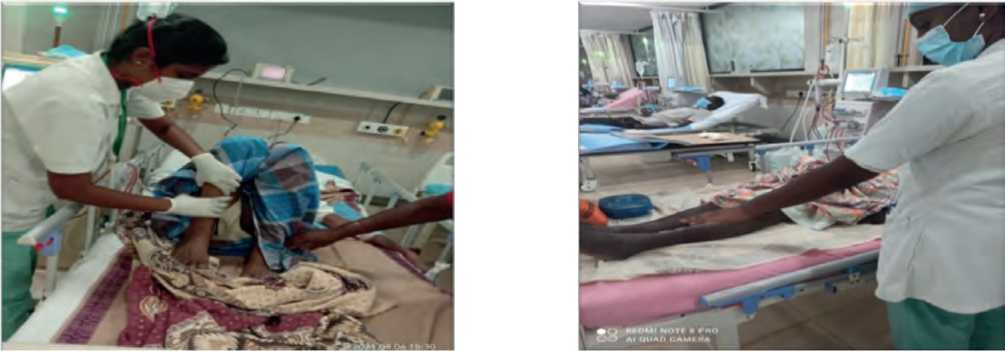
Figure 3. Researcher given Intervention of intradialytic stretching exercise
RESULTS
SECTION A: DISTRIBUTION OF SAMPLE CHARACTERISTICS
PART-1: DEMOGRAPHIC VARIABLES
Thirty demographic variables were assessed the distribution of demographic variables among the patient undergoing Hemodialysis with leg muscle cramps.
This study revealed that according to their demographic variables majority of the subjects 16
(53.3%) were in the age group of 51-60years, Gender 20 (66.7%) were Male, Religion 26 (86.7%) were Hindu, Education 10 (33.3%) were collegiate, Occupation 09 (30.0%) were of Home maker and 09 (30.0%) were of Government employee. According to Family income 10 (33.3%) were between 1500020000, Marital status 30 (100%) were married, Locality 20(66.7%) were and 9 (30.0%) were urban, Duration of treatment 17 (56.7%) were of less than one year and food habits 13 (43.3%) were of non – vegetarian.
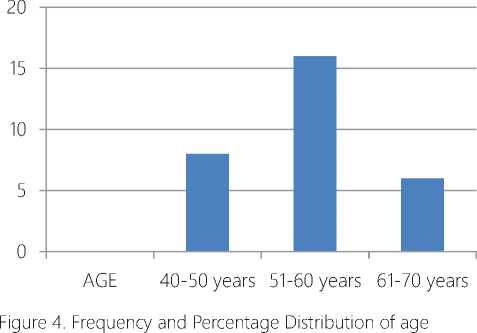
PART-2: CLINICAL VARIABLES
According to their clinical variables most of the patients were diagnosed to have chronic kidney disease and their duration of treatment for less than 1 year which comprises of 17(56.7%) patients from the intervention group. Majority of the patient have 4 hours dialysis in a day which comprises 22(73.3%), sitting of Hemodialysis in a week of thrice they were 18(60%), most of them have Experience the leg muscle cramps middle hour during Hemodialysis which comprises 16 (53.3%),leg muscle cramps restrict activities and movements of the patient during Hemodialysis were comprises 28(93.3), most of the patients have right 12(40%)and left (40%) leg muscle cramps during Hemodialysis, 11(36.6) were feel the muscle cramps at sole us, when the patient were diagnosed with other medical condition were 16(53.3%), quality of life deteriorated because of leg muscle cramps of the patient were very much which comprises 26(86.7%).
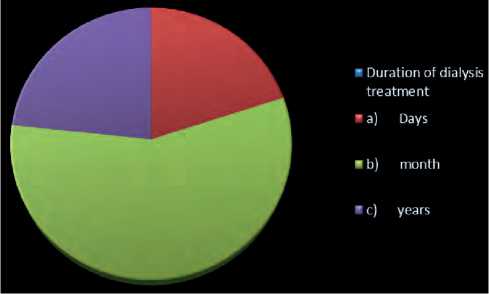
Figure 5. Percentage distribution of duration of treatment
SECTION B:
Assessment of leg muscle cramps among patients undergoing Hemodialysis after performing intradialytic stretching exercises.
Among 30 patients in intervention group, majority of the patients 13 (43.3%) patients experienced mild 100 | Cardiometry | Issue 23. August 2022
leg muscle cramps during the post test. More than half of the patients17 (56.7%) patients did not experience cramps during the post test. This result describes the effect of intradialytic stretching exercises in reducing the leg muscle cramps during Hemodialysis.
E xperience leg muscle cramps during
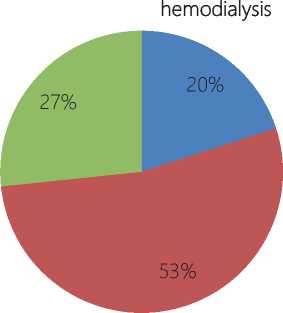
Figure 6. Percentage distribution of experience leg muscle cramps during Hemodialysis
-
■ First hour
-
■ Middle hour
-
■ Last hour
SECTION C:
Assessment of pain level of leg muscle cramps among patients undergoing Hemodialysis after performing intradialytic stretching exercises.
Among 30 patients in intervention group, Most of the patients 17 (56.7%) experienced no pain during the posttest. Some of the patients 13 (43.3%) did not experience pain during the post test. This result describes the effect of intradialytic stretching exercises in reducing the pain level of leg muscle cramps during Hemodialysis.
Table 1
Leg cramps before and after Intradialytic stretching exercise
|
S.No |
Level of leg muscle cramps |
Before Intradialytic stretching exercise |
After Intradialytic stretching exercise |
||
|
Fre-quen-cy No. |
Percentage % |
Fre-quen-cy No. |
Percentage % |
||
|
1 |
No leg muscle cramps (0) |
0 |
0 |
0 |
0 |
|
2 |
Mild leg muscle cramps (1-4) |
0 |
0 |
0 |
0 |
|
3 |
Moderate leg muscle cramps (5-6) |
4 |
13.33 |
12 |
40.00 |
|
4 |
Severe leg muscle cramps (9-13) |
26 |
86.67 |
18 |
60.00 |
SECTION D
Association between the level of leg muscle cramps and demographic variables in intervention group among patients undergoing Hemodialysis.
There was no association found between the level of leg muscle cramps and the demographic variables.
DISCUSSION
Since the hemodialysis patients are often disabled and they spend most of their time on dialysis beds, they are usually inactive. Therefore, the proposed stretching exercises can be very helpful because they focus only on lower Body limbs and have no side effects such as disruption in the hemodialysis treatment due.[14] The exercises have no side effects and no cost and can be done without help. Nurses can help alleviate the muscle cramps symptoms by training the patients and thus take a positive step towards healthcare objectives.
Although the short-term survival of patients undergoing maintenance haemodialysis (MHD)
has been substantially improved with the development of blood purification technology, [15] lowexer-cise capacity continues to affect patients’ health-related quality of life (HRQoL). [16]
Muscle cramps are found to be common in patient undergoing Hemodialysis. Sometimes the leg muscle cramps affect the quality of life among patients undergoing Hemodialysis and it also influences their daily activities. Every one undergoing Hemodialysisare more susceptible to have leg muscle cramps. Almost 80% of patient undergoing Hemodialysis will experience leg muscle cramps during or after Hemodialysis. Various ways and means are available to prevent leg muscle cramp and related health problems of the patient undergoing Hemodialysis. Intradialytic stretching exercise is one of the most important exercises to relieve leg muscle cramp.
This study was supported by Ms.Lekha. J (2017) Effectiveness of Intradialytic Stretching Exercises on Prevention and Reduction of Muscle Cramps among Patients undergoing Haemodialysis at PSG Hospitals Coimbatore. It is estimated that 33 to 86% of patients experience muscle cramps during haemodialysis, which results in early termination of haemodialysis session. The objective of the study was evaluating the effect of intradialytic stretching exercises on muscle cramps during haemodialysis. The study was conducted at the dialysis unit-PSG, hospitals, Coimbatore.
This is a quasi-experimental study. Sixty samples were selected and 30 each in both intervention and comparison group. The pre-test score of muscle cramps was assessed by a standardized cramp questionnaire chart and the visual analogue scale. Intradialytic stretching exercises were given to the intervention group and the post-test assessment was done on the day of 4th, 7th and 10th day of sitting. The study concluded that regular stretching exercises during the haemodialysis prevent the occurrence of muscle cramps and improves the quality of life among the patient undergoing haemodialysis.
This study was supported by Clarkson M. J. et.al (2017) the study explored the efficacy of blood flow restriction exercise during dialysis for end stage kidney disease patients. This is a randomised controlled trial design. A total 75 participants are participated. This study determined the efficacy of blood flow restriction exercise among dialysis patients of improving key physiological outcomes that impact independence and quality of life, with reduced burden on patients. This may have broader implications for other clinic population with similarly declining muscle health and physical function, those contraindicated to higher intensities of exercise.
CONCULSION
Hence this study was focused on the reduction of leg muscle Cramps and incorporated this intradialytic stretching exercises as an evidenced based nursing practice. The design adopted for this study is pre-test, and post-test with control group, which is a type of quasi-experimental research design. The study was conducted on 22.03.2021to28.03.2021 with 30 samples those who had leg muscle Cramps during the Hemodialysis, during a period of 1 weeks in Dialysis unit Saveetha Medical College and Hospital, Thandalam. After obtaining an informed consent, Demographic data, clinical variables, level of leg muscle Cramps was assessed using the standardized self-made muscle cramp questionnaire Scale (0-13 scores) which is comprehensively scored with the various features of leg muscle Cramps. The intradialytic stretching exercises were given passively to the samples during the third and fourth hour of Hemodialysis for a period of 20 minutes per sitting. Data were categorized and analyzed using descriptive (mean, percentage, and standard deviation) and inferential statistics (independent paired ‘t’ test, chi-square analysis).
ACKOWLEDGEMENT
We could like to extend our gratitude to the authorities of Saveetha College of Nursing and Saveetha Medical College and Hospital for this study.
Список литературы A study to assess the effectiveness of intradialytic stretching exercises on leg muscle cramp among hemo dialysis
- Vaidya SR, Aeddula NR. Chronic Renal Failure. [Updated 2021 Jul 16]. In: StatPearls [Internet]. Treasure Island (FL): StatPearls Publishing; 2021 Jan-.
- Makris, K., &Spanou, L. (2016). Acute Kidney Injury: Definition, Pathophysiology and Clinical Phenotypes. The Clinical biochemist. Reviews, 37(2), 85–98.
- Tyagi A, Aeddula NR. Azotemia. [Updated 2021 May 12]. In: StatPearls [Internet]. Treasure Island (FL): StatPearls Publishing; 2021 Jan-.
- Arnold, R., Issar, T., Krishnan, A. V., &Pussell, B. A. (2016). Neurological complications in chronic kidney disease. JRSM cardiovascular disease, 5, 2048004016677687. https://doi.org/10.1177/2048004016677687
- Patrick G. Lynch, Mersema Abate, HeesuckSuh, Nand K. Wadhwa, "Magnesium and Muscle Cramps in End Stage Renal Disease Patients on Chronic Hemodialysis", Advances in Nephrology, vol. 2014, Article ID 681969, 6 pages, 2014. https://doi.org/10.1155/2014/681969
- Bentley S. (1996). Exercise-induced muscle cramp. Proposed mechanisms and management. Sports medicine (Auckland, N.Z.), 21(6), 409–420. https://doi.org/10.2165/00007256-199621060-00003
- Dolidze, N. M., Kezeli, D. D., &Kilasoniya, L. O. (2007). Changes in intra- and extracellular Ca2+ concentration and prostaglandin E2 synthesis in osteoblasts of the femoral bone in experimental hyperand hypothyroidism. Bulletin of experimental biology and medicine, 144(1), 17–20. https://doi.org/10.1007/s10517-007-0242-4
- Page P. (2012). Current concepts in muscle stretching for exercise and rehabilitation. International journal of sports physical therapy, 7(1), 109–119.
- Bordoni B, Sugumar K, Varacallo M. Muscle Cramps. [Updated 2021 Jun 20]. In: StatPearls [Internet]. Treasure Island (FL): StatPearls Publishing; 2021 Jan-.
- Giannaki, C. D., Stefanidis, I., Karatzaferi, C., Liakos, N., Roka, V., Ntente, I., &Sakkas, G. K. (2011). The effect of prolonged intradialytic exercise in hemodialysis efficiency indices. ASAIO journal (American Society for Artificial Internal Organs : 1992), 57(3), 213–218. https://doi.org/10.1097/MAT.0b013e318215dc9e
- Intradialytic Stretching Exercises on Fatigueand Muscle Cramps Chandralekha .C. Sa, R. Mercy RusselinPrabha, b International Journal of Innovative Science and Research Technology. ISSN No:-2456-2165, Volume 5, Issue 11, November – 2020
- Clarkson, M. J., Fraser, S. F., Bennett, P. N., McMahon, L. P., Brumby, C., &Warmington, S. A. (2017). Efficacy of blood flow restriction exercise during dialysis for end stage kidney disease patients: protocol of a randomized controlled trial. BMC nephrology, 18(1), 294
- Effectiveness of Intradialytic Stretching Exercises on Prevention and Reduction of Muscle Cramps among Patients undergoing Haemodialysis at PSG Hospitals Coimbatore, Dr. G. Malarvizhi 3 Ms. Lekh IOSR Journal of Nursing and Health Science (IOSRJNHSe-ISSN: 2320–1959.p- ISSN: 2320–1940 Volume 6, Issue 2 Ver. IV (Mar. - Apr. 2017), PP 47-53.
- Sakkas GK, Hadjigeorgiou GM, Karatzaferi C, Maridaki MD, Giannaki CD, Mertens PR, et al. Intradialytic aerobic exercise training ameiorates symptoms of restless legs syndrome and improves functional capacity in patients on hemodialysis: a pilot study. ASAIOJ. 2008;54(2):185–90. Doi: 10.1097/ MAT.0b013e3181641b07.[PubMed:18356653].
- Block GA, Klassen PS, Lazarus JM, et al. Mineral metabolism, mortality, and morbidity in maintenance hemodialysis. J Am Socnephrol 2004; 15: 2208–2218.
- Chen JL, Godfrey S, Ng TT, et al. Effect of intradialytic, low-intensity strength training on functional capacity in adult haemodialysis patients: a randomised pilot trial. Nephrol Dial Transplant 2010; 25: 1936–1943.

